I am aiming to take the fourier transform of a distribution. It is a physics problem and I am trying to transform the function from position space to momentum space. I am however finding that when I attempt to take the fourier transform using scipys fft, that it becomes jagged whereas a smooth shape is expected. I assume it is something to do with sampling, but I cannot work out what is wrong.
This is what the transformed function currently looks like:

This is what it is roughly supposed to look like (it may have a slightly different width, but in terms of smoothness it should look similar):
and here is the code used to generate the blue image:
from scipy.fft import fft, fftfreq, fftshift
import numpy as np
import numpy as np
import matplotlib.pyplot as plt
import scipy.fftpack
import scipy
from scipy import interpolate
from scipy import integrate
# number of signal points
x = np.load('xvalues.npy') #Previously generated x values
y=np.load('function_to_be_transformed.npy') #Previously generated function (with same number of values as x)
y = np.asarray(y).squeeze()
f = interpolate.interp1d(x, y) #interpolating data to make accessible function
N = 80000
# sample spacing
T = 1.0 / 80000.0
x = np.linspace(-N*T, N*T, N)
y=f(x)
yf = fft(y)
xf = fftfreq(N, T)
xf = fftshift(xf)
yplot = fftshift(yf)
import matplotlib.pyplot as plt
plt.plot(x,np.abs(f(x))**2)
plt.xlabel('x')
plt.ylabel(r'$|\Psi(x)|^2$')
plt.savefig("firstPo.eps", format="eps")
plt.show()
plt.plot(xf, np.abs(1.0/N * np.abs(yplot))**2)
plt.xlim(right=100.0) # adjust the right leaving left unchanged
plt.xlim(left=-100.0) # adjust the left leaving right unchanged
#plt.grid()
plt.ylabel(r'$|\phi(p)|^2$')
plt.xlabel('p')
plt.savefig("firstMo.eps", format="eps")
plt.show()
Update
If anyone could offer some further advice, that'd be great because I am still having trouble. Following from @ScottStensland 's comment, I have attempted to find the FT of a sin wave to see if I find any problems and then retrofit the example back onto my initial problem.
Here are the results for the FT of sin(x):
This is as expected (I think). But when I retrofit the code back to by initial example I get the following (The top image is my initial distribution):
The code is as follows for the sin(x) example:
# sin wave
import numpy as np
from numpy import arange
from numpy.fft import rfft
from math import sin,pi
import matplotlib.pyplot as plt
def f(x):
return sin(x)
N=1000
x=np.arange(0.0,1.0,1.0/N)
y=np.zeros(len(x))
for i in range(len(x)):
y[i]=f(x[i])
#y=map(f,x)
#print(y)
c=rfft(y)
plt.plot(abs(c))
plt.xlim(0,100)
plt.show()
and for the attempt at my own one:
#Interpolated Function
# sin wave
import numpy as np
from numpy import arange
from numpy.fft import rfft
from math import sin,pi
import matplotlib.pyplot as plt
x = np.linspace(-1.0,1.0,1001) #Previously generated x values
y=np.load('function_to_be_transformed.npy') #Previously generated function (with same number of values as x)
y = np.asarray(y).squeeze()
N=1001
x=np.arange(-1.0,1.0,2.0/N)
#y=map(f,x)
#print(y)
plt.plot(x,y)
plt.show()
c=rfft(y)
plt.plot(abs(c))
plt.show()
The relevant files are here: https://github.com/georgedixon4321/NewDistribution.git



